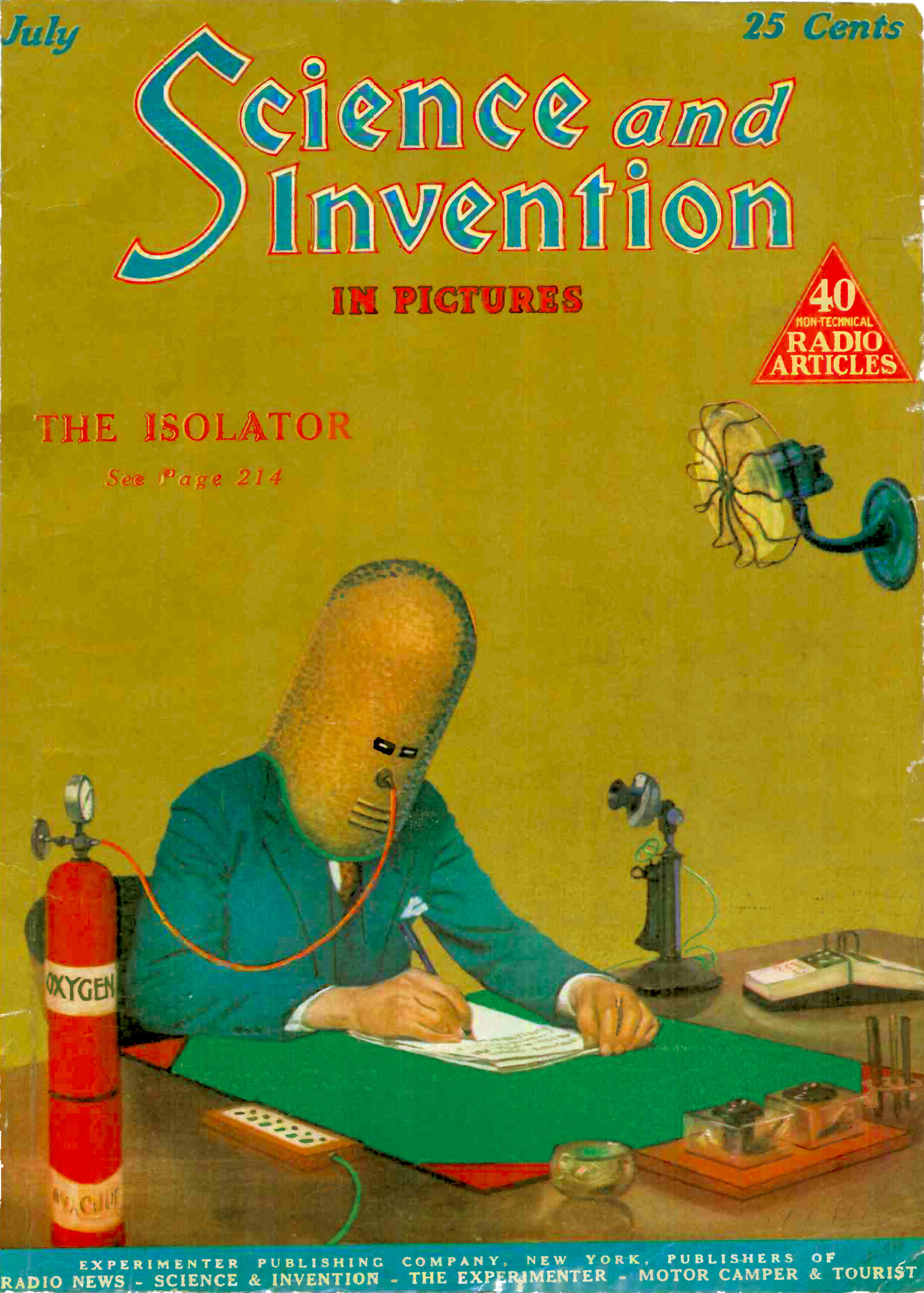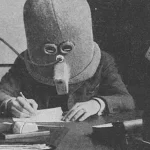
This is for all you writers who need complete quiet and concentration when you work — provided you don't suffer from claustrophobia.
In 1925, editor and publisher Hugo Gernsback proposed an invention to eliminate noise distractions. Gernsback dubbed his creation "The Isolator" helmet.
His prototype helmet was made of wood and felt, and included a mouth/nose baffle for breathing, and three pieces of glass to allow users to see outside of the helmet. He deemed this first version to be only 75% efficient, as it did not block all noise. A subsequent version, which eliminated the use of wood, raised the sound elimination to between 90 and 95 percent.
Another problem was that the helmet could only be worn for about 15 minutes at a time before the user would become drowsy, no doubt  because of the helmet filling up with recycled carbon dioxide. As scientists now know, higher levels of carbon dioxide results in drowsiness, headaches, poor concentration, loss of attention, increased heart rate, and even nausea. Undeterred, Gernsback added an oxygen tank to assist the user with breathing while wearing the helmet.
because of the helmet filling up with recycled carbon dioxide. As scientists now know, higher levels of carbon dioxide results in drowsiness, headaches, poor concentration, loss of attention, increased heart rate, and even nausea. Undeterred, Gernsback added an oxygen tank to assist the user with breathing while wearing the helmet.
Gernsback later patented "The Isolator". While Gernsback had deemed the item to be a "great investment," the item had disappeared by 1926 after only eleven helmets were created.
 But perhaps it was he was just a man ahead of his time. In 2017, the Ukrainian agency Hochu Rayu Design Bureau designed and created The Helmfon to solve the noise-related issues that can occur in open office plans.
But perhaps it was he was just a man ahead of his time. In 2017, the Ukrainian agency Hochu Rayu Design Bureau designed and created The Helmfon to solve the noise-related issues that can occur in open office plans.
Today, Gernsback is remembered as the “Father of Science Fiction,” best known for his books Ralph 124C 41+ (1911) and Ultimate World (1958), and the magazines Modern Science (1908) and Amazing Stories (1927), the first science fiction pulp magazine.